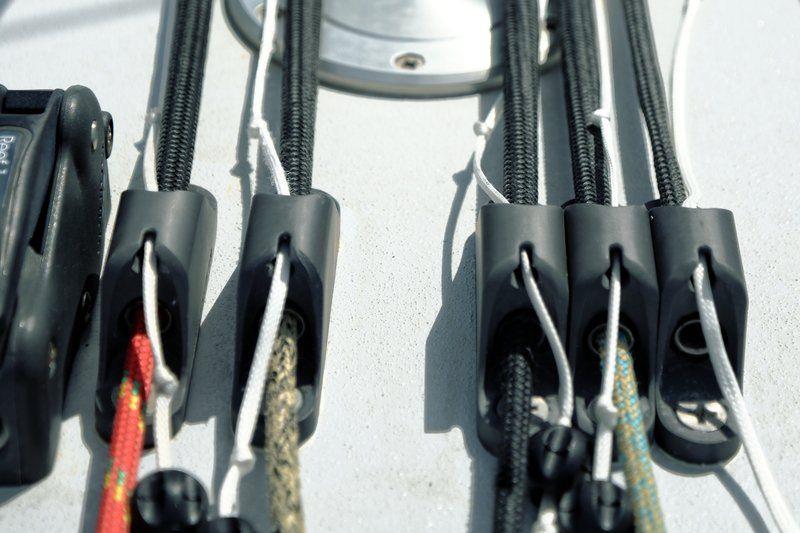
Cleats, Clutches and Jammers - What's the difference?
by Kerri Robson 14 Jun 2019 18:00 AEST

Rope Clutches © Ronstan
When it comes to purchasing new sailing hardware, there are a plethora of options available. However, whilst some hardware has a clear place and purpose on a boat - such as hanks, locks and blocks - when it comes down to choosing between a cleat, clutch or jammer it can be hard to know which to go for.
The following guide will examine cleats, clutches and jammers in turn, to enable you to determine the best option for securely holding a line on your boat.
Cleats:
A cam cleat features two spring-loaded cams which pinch and hold the rope between metal teeth.
Ideal for small boats, cam cleats can accommodate relatively low loads, and are often the primary rope holding device on dinghy's and small keel boats, or used within a purchase system on bigger boats.
To release the line, simply pull the line upward and out of the cleat. This mechanism allows the rope to be adjusted easily, and the line can be quickly released under load.
Cam cleats are therefore well suited to dynamic lines - such as sheets and control lines - and can be quickly released in an emergency.
When to Choose a Cleat:
- For lines that are constantly adjusted or trimmed by hand
- For dynamic lines on small boats - e.g. control lines or sheets
- For relatively low loads
Clutches:
A rope clutch uses a toothed cam which is controlled by a handle. When the handle is down, the cam is engaged and the toothed plate keeps the rope in place. To fully release the line, simply open the clutch handle.
Clutches are ideal for controlling medium loads, and are therefore used extensively on medium sized boats. As a rule of thumb, choose a rope clutch when you would use a cleat, but the load is higher; with a clutch, it is possible to lock off a halyard, main, jib or even spinnaker.
Like a cleat, a rope clutch allows easy trimming and adjustment (lines can be pulled in with the clutch closed) and, in an emergency, a fully loaded line can be quickly released without the need for a winch. Having said that, in most situations it is better to take the loaded line onto a winch as a precaution, before releasing the clutch and also to minimize wear and tear.
As a clutch is more complex than a cleat, there are more moving parts - and so more maintenance is required. Explore our guide on the Spinlock rope clutch range.
When to Choose a Clutch:
- For lines that are regularly adjusted
- For lines on medium boats - e.g. halyards
- For medium loads
Jammers:
Finally, a jammer works in much the same way as a clutch, but the handle cannot be released whilst under heavy load.
Instead, the load in the line must first be taken to a winch and tensioned so all the load is now off the jammer, and only then can the handle of the jammer be pulled out and the rope released.
As a result, no adjustment is possible, making jammers a good option for permanently loaded lines such as halyards on larger boats.
Arguably slightly more work than a clutch, a jammer is a good choice when the load is high and you need a completely strong, secure and reliable option - sometimes a jammer is the only option that can accommodate high loads on larger boats!
Although there are some safety implications of not being able to quickly release the line, there are relatively few moving parts which results in lesser maintenance of the jammer.
When to Choose a Jammer:
- For lines that are permanently loaded for extended periods of time
- For lines on bigger boats - e.g. halyards
- For high loads
Think you've cracked it? Browse cleats, clutches & jammers, or alternatively get in touch via our contact form for further advice and support.